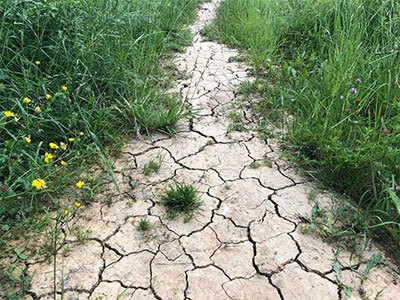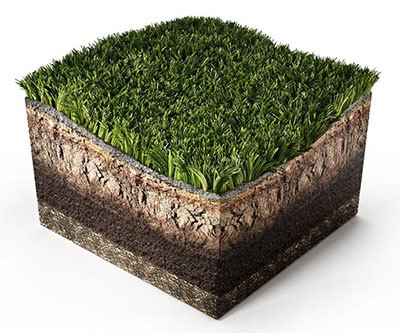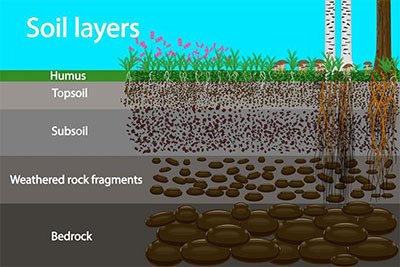Do you find gardening challenging most of the time? Don’t worry. Even expert gardeners experience some difficulty once in a while. In fact, I’ve hit a couple of hitches on my own.
Gardening is a process, and you learn a thing or two as you go along the way. Sometimes we learn by making a mistake first. This is why it is important to do your research and get some advice from the experts.
In this article, we’ll share with you some tips and advice on how growing grass in clay soil will benefit you.
Table of Contents
- How to grow grass in clay soil?
- 1. Check the thickness of the ground you want to plant on
- 2. Use an organic compost over the surface of the soil and spread it at least six inches deep
- 3. Test the soil
- 4. Measure the area you intend to plant on
- 5. Segregate the seeds into two applications
- 6. Start planting the grass
- 7. Water the planted area
- How to improve the clay soil in existing lawns
- Final words
How to grow grass in clay soil?

Clay soil is usually made up of heavy soil, making it harder to plant in. To solve this issue, you need to make certain adjustments to prepare the soil for planting. Clay soil tends to compress easily and can store excess water.
By adding organic compost to the soil, the composition of the soil changes. Once the soil is less dense, it allows the soil to cultivate and become healthy. Organic matter is, in fact, the best choice if you want to improve the form of your clay soil significantly.
Growing grass in clay soil is not something you should be intimidated by. In fact, the steps are simple and easy to follow. All you have to do is follow the techniques below to grow your garden successfully.
1. Check the thickness of the ground you want to plant on
Gather at least a half cup of soil in your hand, pour a couple of drops of water, and mold the earth together to form a ball. Afterward, press the soil using your fingers to make it flat.
Once the soil is flat, the clay composition breaks into one to two inches. If the clay soil is thicker, it will become longer than two inches.
2. Use an organic compost over the surface of the soil and spread it at least six inches deep

If you prefer heavier clay soil, extend it to two inches deeper. Use a tiller to mix the compost evenly into the soil to help improve the distribution of the compost.
Let the soil mixture sit for at least two months.
3. Test the soil
After two months, feel the ground again by pressing the soil between your index and thumb. Observe the effect.
The soil must not form a long stretch of soil. This will help you determine if there is enough organic compost left in the soil. If the stretch of soil is more than an inch, spread another layer of organic compost over the surface.
Then wait another two months to test the soil once more. This allows the compost enough time to convert the composition of the soil.
4. Measure the area you intend to plant on
This will help you determine the number of seeds you need. Make sure you follow the proper spacing between plants to allow enough air circulation.
Check the recommended quantity from the manufacturer. Never underestimate the information provided on the label because it is indeed valuable. Usually, the label will tell you the right way of sowing your seeds as well as the spacing between them.
I made the mistake of not bothering to read the label. In a nutshell, I ended up overcrowding my plants by planting seedlings too close to each other.
5. Segregate the seeds into two applications
Spread the first batch of seed over the ground as you walk the path vertically. Then apply the next batch perpendicularly for even coverage.
Use a lawn roller filled with water and go over the seeded area. Then apply a thin layer of straw mulch over the surface.
6. Start planting the grass
Dig holes that are at least six inches apart and sprinkle the ground with water to keep it damp. Plant a plug into each hole. Use a lawn roller with half-filled water and roll it over the planted area.
7. Water the planted area
Use at least ¼ inch of water and sprinkle it over the ground once or twice a day to keep the soil moistened. Don’t forget always to measure the water you are applying.
How to improve the clay soil in existing lawns

Now, in case you want to amend the clay soil in your existing lawn, here are some tips.
Apply a topdressing. This is a process of applying organic matter over the surface. It is usually conducted once or twice a year, depending on the condition of your lawn and soil. Start by spreading a thin layer of organic matter over the grass’s surface. Apply a thickness of at least ¼ to ½ inches.
Work the organic matter into the soil. You can use the back part of a rake to brush the grass with organic matter until it touches the soil. The topdressing won’t effectively work unless the organic matter reaches the soil.
Core aerate your lawn before topdressing. Dig some holes in the soil and remove the cores before you start topdressing, especially if the soil has a large amount of clay in it. Then pass the aerator over the grass a couple of times. During the topdressing, allow the organic matter to fill the hole so it may penetrate the soil and not just the surface.
Final words
After reading this article, you are now aware that growing grass in clay soil isn’t that complicated. However, just like any other gardening task, this requires tons of patience. You can’t expect to grow your grass instantly.
It requires time and, of course, the right technique to achieve a successful planting job. As long as you strictly follow and implement the guideline above, you won’t go wrong. It’s simple, easy, and convenient. You don’t have to use any complicated methods or techniques.
If you have any questions, feel free to send us a message or leave a comment below. We’d be happy to answer you as best as we can.
Related Post


I have a very large area to seed about 1/2 acre mostly clay can you advise best way to proceed please.
Thanks
Terry